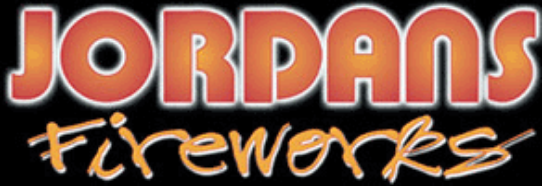Fireworks Jargon Buster
Barrages
A barrage is a common name used for a series of individual firework tubes that are bundled together and have their fuses linked. Therefore, you only have to light one fuse with a barrage and the fuse linking the various tubes will light each tube in turn. The term, barrages can also be used to describe various types of fireworks i.e. several fountains linked together would be a barrage of fountains, likewise, several Roman candle tubes linked together would be a barrage of Roman candles. Barrages can vary considerably in size from just a few tubes up to many hundreds.
Cakes
A cake is another term used to describe a bundle of single-shot Roman candle tubes.
Category 2 or F2 Fireworks
These are fireworks that have been tested for viewing at a minimum distance of 8m and are classed as garden fireworks. There are size limits for each type of firework for it to fall into the F2 category.
Category 3 or F3 Fireworks
These are fireworks that have been tested for viewing at a minimum distance of 25m and are classed as display fireworks. These are the highest category of fireworks that the general public can purchase. They are not suitable for use in small gardens but are ideal for use in organised firework displays and are used at many sports club, school, Scout group, Church and community events. They can though be purchased and used by the general public but must be used in a sufficiently large space. No special training is required to use Category F3/3 Fireworks as each one has its own detailed instructions on it.
Compound Fireworks
Compound fireworks are a recent innovation in the UK firework market. Recent changes in firework regulations introduced a limit to how much explosive content an individual firework can contain (1kg). This obviously placed constraints on how large a firework could be. Compound fireworks are made up of several fireworks, each of which cannot contain more than 1kg of explosive content; these are then fused together to produce a long-lasting display. You only have to light one fuse to have a spectacular display which can last several minutes.
Display Packs
Display packs will contain a variety of fireworks to give a varied display. Most types of fireworks will be found in a display pack, so you will get rockets, Roman candles (some may be cakes or barrages), mines, fountains and set-piece fireworks. You will generally find a mix of noisy and quieter fireworks in a display pack and most these days tend to contain mainly aerial effect fireworks.
Fountains
These are a lower-level effect firework and tend to produce gold and silver sparks although some may also contain crackles and whistles as well as other colours. Fountains can be quite long-lasting compared to aerial fireworks and are often found in small selection packs; however large cone-shaped fountains can produce spectacular displays.
Mines
Mines produce one of the most spectacular firework effects but also probably have the shortest duration. Multi-shot fireworks fire their stars one after each other over a reasonably long duration but mines fire all their stars and effects in one shot from ground level. They are an ideal firework to start a display with. To increase the duration of a mine, some may be in fact a mine/fountain combination. With these, the fountain part of the firework will be the delay fuse to the large mine eruption. Some will be a combination of tubes each containing a single mine effect and these tubes are linked together with a delay fuse to produce a longer-lasting display.
Multi-shots
Rockets
Probably the best known of all firework types. Rockets have sticks for stability in flight and are made up of a motor which propels the rocket into the sky and a head which will contain the stars which will be displayed when the rocket has reached its maximum height. All rockets regardless of size work on the same principle. Larger rockets will contain more stars in their heads and can also include other effects such as crackles.
Roman Candles
This is an often-misused term. Whilst many people will think a Roman candle is a quiet firework it is a term that describes a firework that fires a star or unit up into the sky. A long single tube Roman candle will generally contain a number of stars or effects separated by a delay, they will then fire their stars or effects into the sky at regular intervals. Shorter tubed Roman candles may only contain one star or effect. Some will contain quiet coloured stars, whilst others may contain, bangs, whistles etc. Several Roman candles may be bundled together to form a barrage or even a single ignition firework but the principle is the same in all cases; to fire a star or effect into the sky.
Set Piece Fireworks
Catherine wheels are the best-known type of set-piece fireworks. Set piece fireworks are ones made up of several fountain type fireworks and will be arranged to make a shape or in the case of a rotating device, they are arranged to spin on an axis. Set piece fireworks need fixing to pots and require more preparation than the other types of fireworks.
Single Ignition Fireworks
This term has become increasingly popular and basically is used much the same as the term ‘barrage’. A single ignition firework as the name suggests is a firework that you only have to light once, as opposed to a box of fireworks where you have a selection of fireworks that have to be lit individually. The term single ignition fireworks is primarily used to describe a large aerial firework which is made up of many individual tubes which contain a variety of effects. As the tubes have linking fuse between them, the lighting of a single fuse will produce a changing display i.e. a display in a box.



